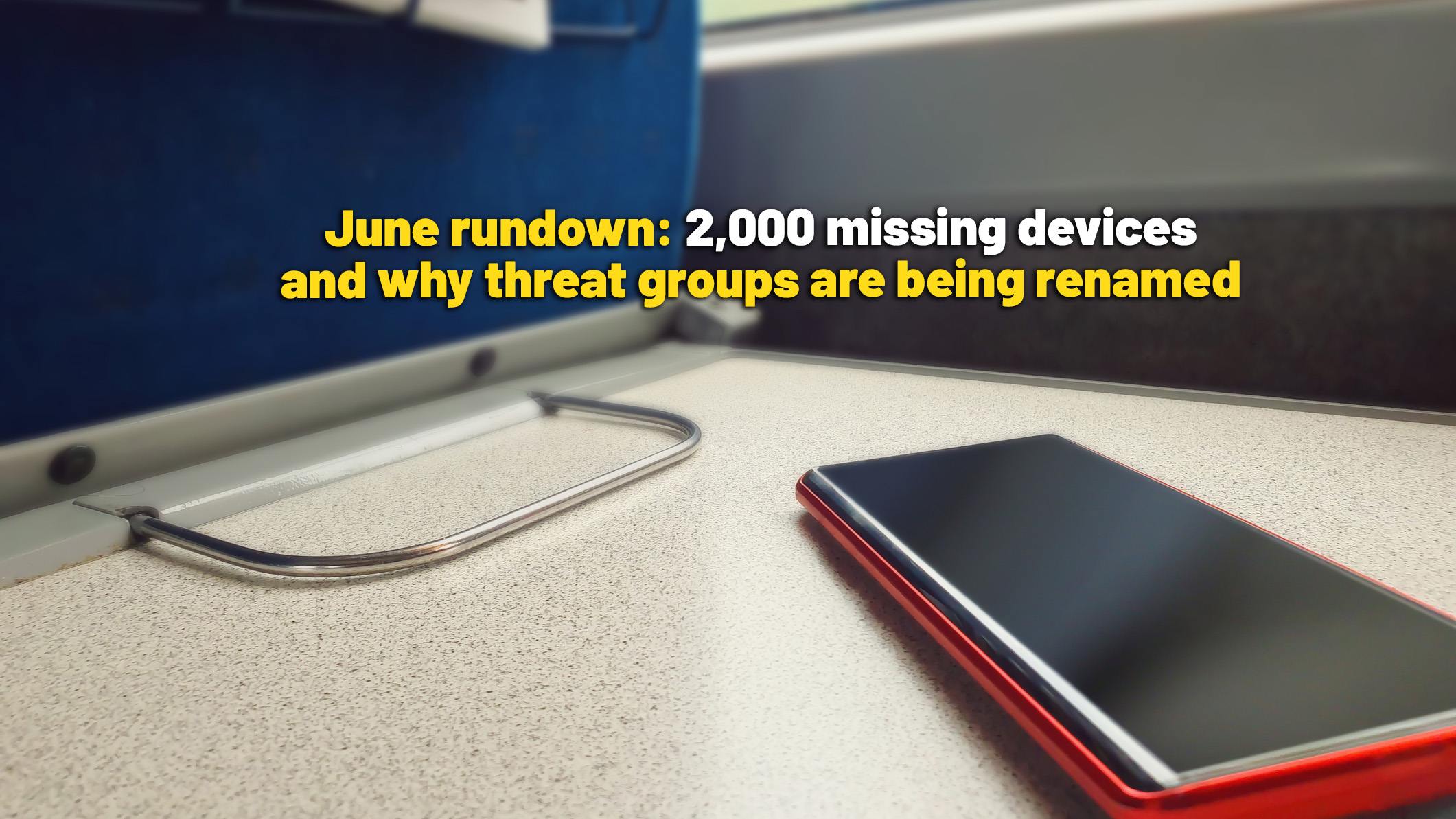Quantum supremacy is here — so what?
While Google's claim to have hit the milestone is important, there's still a way to go on the road to quantum computing


Given the idea central to quantum computing is that bits can be in multiple states at the same time, perhaps it’s no surprise that Google’s quantum supremacy claims are disputed – as is the importance of the milestone itself.
Last October, Google released a paper claiming its quantum computer had hit that milestone, only for IBM to counter with a paper disagreeing supremacy had been reached. Both sides have a point, but either way, we’re on our way to quantum computing – although don’t expect a quantum laptop anytime soon, if ever. Indeed, we’re not really sure what architecture quantum computing will take, or how we’ll use it.
Here’s why the quantum supremacy milestone is much less dramatic – and more compelling – than you may realise.
What is quantum computing?
Standard computers use binary; a bit is either on or off, a one or a zero. Quantum computers take advantage of subatomic behaviour that allows for particles to be in multiple states, so a quantum bit or “qubit” can be a one, a zero, anywhere in between or both. That allows an exponential increase in data storage and processing power.
A quantum computer would harness that massive power to process at a much faster rate than a standard computer, but there are challenges. First, we need to build one. There are machines being built by Google and IBM, as well as California-based Rigetti Computing and Canadian D-Wave Systems, all with different techniques. Second, because of interference, quantum computing is all over the place –to put it mildly – meaning such systems require error correction. And, even with a working system, we need algorithms to manage its processes.
All of that development will take time. To track progress, in 2012 California Institute of Technology professor John Preskill came up with the idea of quantum supremacy as a milestone and it’s simple: we reach supremacy when a quantum computer can do an equation that a traditional computer could not in a reasonable time frame. “It goes beyond what can be achieved by classical computing,” said Toby Cubitt, associate professor in quantum information at University College London.
Despite the dramatic name, all quantum supremacy really means is that a quantum computer has been built that works. “The terminology is unfortunate,” admitted Cubitt, “but we appear to be stuck with it.” That said, it’s an important milestone, but only the first on the long road to quantum computing. “That’s really a long way off,” he added.
Sign up today and you will receive a free copy of our Future Focus 2025 report - the leading guidance on AI, cybersecurity and other IT challenges as per 700+ senior executives
What did Google claim?
In October, Google claimed to have hit that milestone using its Sycamore system. Google said in a paper in Nature that Sycamore performed a calculation in 3mins 20secs using 53 qubits, claiming that the same calculation would have taken 10,000 years using the most powerful supercomputer in the world, IBM’s Summit. “Google was really trying to hit that quantum supremacy milestone,” said Cubitt. “They achieved a quantum computation that is at the boundary of what can be simulated or reproduced by the world’s biggest supercomputers.”
However, an early draft of the paper was leaked a month ahead of the Nature publication, giving IBM time to get ahead of those claims. In its own paper, IBM said that an optimised version of Summit could solve the calculation in 2.5 days – meaning Sycamore’s feat didn’t qualify as true quantum supremacy.
But the Sycamore wasn’t at full operation as one of its 54 qubits was “on the fritz”, said Michael Bradley, professor of physics at the University of Saskatchewan. “So only 53 were working.” And that matters, because had that qubit been functional, the IBM paper’s claim wouldn’t stand. By adding that extra qubit, the Sycamore has another power boost which would have let it easily surpass IBM’s system. “Any computation can be reproduced on a classical computer, given enough time,” said Cubitt. “How fast it can be done, that’s what changes.”
If the right type of algorithm is used, designed with the right structure, every qubit added to the computation will double the size of the problem to be solved for a classical computer. In other words, if that fifty-fourth qubit had been working, the IBM system would have been left in the dust. “Once you have exponential growth, it doesn’t matter how big of a computation you’ve done,” Cubitt said. “Because if you can just manage to simulate something on a classical computer, then if a few extra qubits are added, you’re definitely not going to be able to make it twice as big as the world’s biggest supercomputer.”
So why did IBM dispute Google’s Sycamore achievement? “This argument is a little bit [of] PR by IBM,” said Cubitt. “Sour grapes that they didn’t achieve it first.”
Of course, this is only the first step towards quantum computing – and the computation itself isn’t useful. There’s no requirement in Preskill’s definition that the computation have any purpose, and Google’s doesn’t – it’s essentially a random sampling equation. “It isn’t what most people would consider a computation,” said Bradley. “It’s kind of an odd benchmark. It’s a good benchmark, in that it demonstrates topologically that you can do… the operations needed for a computation, but the actual computation is of no interest to anybody.” He added: “It doesn’t take away from the technological achievement, but I think in a way it’s a little bit oversold.”
Still, Bradley stressed that merely making the machine work is worth applauding. “It’s pretty impressive because the whole thing needs to be cooled to ultra-low temperatures cryogenically, which is no mean feat,” he explained. “And you’ve got to control the communication between the different bits and so forth. The fact they were able to do anything at all is impressive.”
Quantum is on the way… slowly
Now we have hardware, the next milestones will be making use of it – and that won’t be easy. Indeed, the lack of useful algorithms is likely why Google stuck to random sampling for its computation. “There’s not many computations that can be done by quantum computers,” Bradley explained. “The idea of quantum computation is that by exploiting aspects of quantum nature, in particular interference of qubits coherently, you can get a huge speed up for certain kinds of processes.”
But there simply aren’t many algorithms that take advantage of those properties. “The hardware is getting somewhere, but the software – so to speak – is a ways behind,” he said. That’s one reason we likely won’t have quantum computers on our desks. “We probably won’t ever have a general purpose quantum computer because they just don’t have that kind of algorithmic flexibility that we see with a regular computer,” Bradley said.
In truth, we don’t need it. Standard computers are fast enough for most tasks. Instead, quantum computers are likely to sit alongside supercomputers, performing specific tasks for researchers, be it modelling, crunching through massive amounts of data, and running until now impossible experiments, in particular with quantum physics.
Another milestone is error correction, which adds overhead to any quantum computer. Cubitt says one of the key steps is to solve that challenge. “The next milestone people are thinking about is to demonstrate rudimentary error correction and fault tolerance in a quantum computation,” he said, noting that having enough overhead in a quantum computer that error correction isn’t a burden is a long way off.
Not quite here yet
So let’s be absolutely clear: quantum computers aren’t going to be sitting on our desktops anytime soon, if ever. Instead, they’ll first become the next generation of supercomputers. “That’s really a long way off,” said Cubitt. Bradley agrees: “It will take time and we have to temper expectations a little bit.”
Indeed, different types of quantum computers may work better for different algorithms and tasks, meaning we end up with a variety of systems. And some of the time, as IBM’s work shows, we may be able to simply simulate quantum computers – that’s cheaper and more accessible. “There’s no point in building a quantum computer if you can just do it classically,” Cubitt said.
That suggests that the debate around whether Google achieved supremacy or not is missing the point. Both companies have helped push the science of computing further.
But science is slow, driven by methodical steps forward rather than dramatic breakthroughs. Surpassing the quantum supremacy milestone has sparked hype and backlash – and neither are true. “The Google experiment is a very nice piece of science,” Cubitt said. Google’s paper is a milestone worth celebrating, but there’s more work to be done.
Freelance journalist Nicole Kobie first started writing for ITPro in 2007, with bylines in New Scientist, Wired, PC Pro and many more.
Nicole the author of a book about the history of technology, The Long History of the Future.
-
 Quantum is 'the future of AWS system security', Amazon claims
Quantum is 'the future of AWS system security', Amazon claimsNews With third major quantum investment, AWS sets stage for next decade of network infrastructure
-
 BT and Toshiba to launch quantum-secured network across London
BT and Toshiba to launch quantum-secured network across LondonNews The two companies say this is the first commercially available network of its kind
-
 Infosys selects AWS to develop next-gen quantum computing applications
Infosys selects AWS to develop next-gen quantum computing applicationsNews The firm will leverage Amazon Braket to test novel quantum computing algorithms
-
 Researchers build multi-node quantum network
Researchers build multi-node quantum networkNews The network paves the way for quantum internet that uses quantum physics for communications.
-
 The quantum internet is on its way
The quantum internet is on its wayIn-depth A pair of key experiments show how quantum tech could add unbreakable security to the internet


